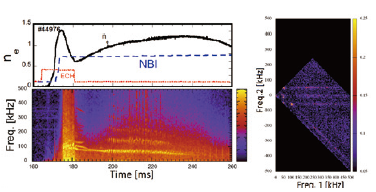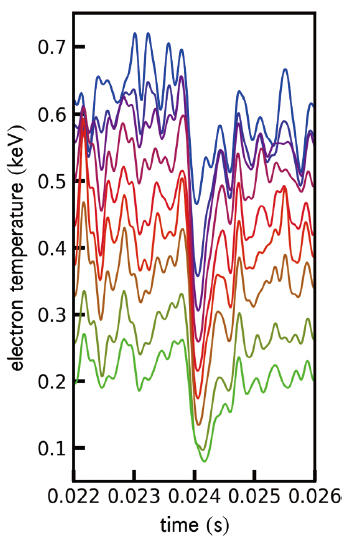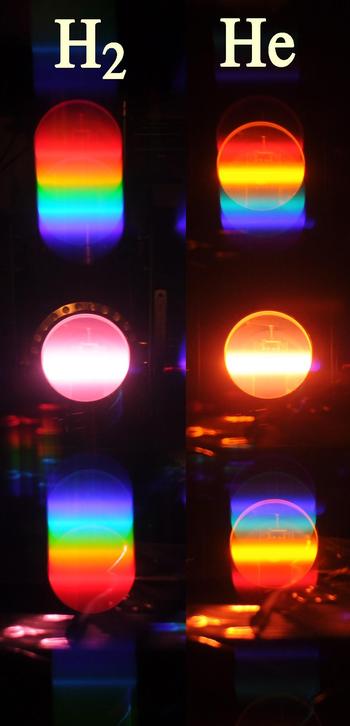Complex Plasma Systems
Advanced Energy Generation Division Complex Plasma Systems Research Section
Professor : Shigeru INAGAKI
Associate Professor : Shinichiro KADO
Assistant Professor : Fumiyoshi KIN
Various collective phenomena appear in complex plasmas where many structures coexist. Fusion plasma is a typical complex plasma in which collective effects induce new structures and thus the plasma is constantly changing. We aim to understand the laws of this plasma wandering in order to generate fusion energy.
http://www.iae.kyoto-u.ac.jp/complex/index_en.html
Complex collective phenomena appear in plasmas in which many elements and structures coexist. Such a plasma is called a complex plasma. A plasma is a collection of charged particles such as electrons and ions. When the plasma has large energy, collective motions of the plasma, such as waves, undulations, flows, and vortices, are created. Accompanying this plasma motion, heat and charged particles become homogeneous or localized. The resultant inhomogeneity of heat and particles creates new plasma motion, and then the plasma is constantly changing. This "law of plasma wandering" leads to plasma motion on a variety of spatiotemporal scales that cannot be predicted from the motion of individual charged particles.
The "Fusion plasma" is a complex plasma, and it exhibits a great variety of dynamics. In order to realize fusion, we need to understand this complex plasma system. For this purpose, we are trying to clarify the "law of Panta Rhei" of plasmas. Observation is the key to understanding the law. To "observe" it is necessary to create and measure a complex plasma system. In this research field, in order to realize plasma fusion high energy plasma is generated in the plasma experimental device "Heliotron J", and is measured using light and electromagnetic waves, and the data is analyzed. We are working with theory and simulation to explore the "law of Panta Rhei" for thermal fusion.
Probing What Is Real in Plasma Using Optical Emission
Optical emission from plasmas includes plenty of information such as density, temperature, ionic species and their fluctuations.
"Know the enemy (plasma) and know yourself (measurement methods and data), then you can fight the hundred battles without fear" --the real plasma properties that have
never been known to anyone will be in our hands.
Plasma emits various line spectra as can be seen through a simple grating film. One can draw huge amount of information from the
high-grade spectrographs.
Turbulence and transport in fusion plasma
Confined plasma is, in reality, far from calm. There are many types of turbulent fluctuations growing from the non-uniform plasma parameters. They enhance the transport and degrade the plasma confinement property. For the characterization of the turbulence, we applied various kind of spatiotemporal spectral analysis methods and trying to figure out the correlation between the turbulence and the plasma confinement.
Measurement and signal processing for the turbulent plasma fluctuations. Various spectral analysis techniques are useful for determining the eddy size, frequency and non-linear coupling of the turbulences

In general, prediction of turbulent transport is difficult because the broadband nature of the spatiotemporal scale of plasma turbulence. We are challenging to the resolve the problems of multi-time-scale turbulence (e.g. abrupt phenomena, nonlocal transport) by using electron cyclotron emission with ultra-fast digital storage oscilloscope and advanced spectrum analysis.
Bursty transport observed in torus plasmas. Heat is transferred to outside of plasma. This phenomenon is similar to avalanches, which are driven by self-organized criticality of turbulent plasma










